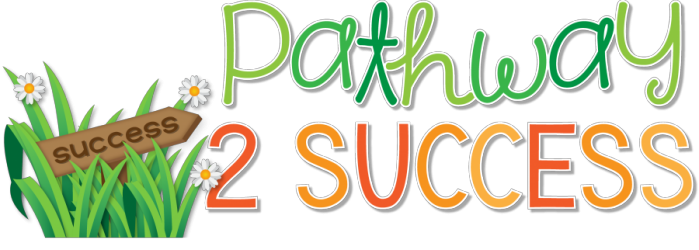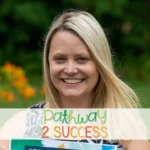
Self-awareness is having a strong understanding of who you are. This is the first of five core domains of social emotional learning. Self-awareness comes first for an important reason, especially when teaching these important SEL skills to children and teens. If we want kids and young adults to effectively manage their behaviors, work best with others, and problem-solve through life’s challenges, they need to have an accurate understanding of their own actions first. This is where self-awareness comes in.
What is Self-Awareness?
Self-awareness is having an accurate understanding of ourselves. That includes knowing our strengths, challenges, values, emotions, and hopes for the future. When kids and teens have stronger self-awareness skills, they’re better equipped for success.

Essentially, self-awareness is a prerequisite for other skills. In order to study and manage coursework effectively, learners need to be aware of how they learn best. If we want kids to stay organized and tidy, they themselves need to recognize when they are organized and when they are not. In order to effectively use coping strategies when overwhelmed, kids and young adults need to be aware of their own emotions in the first place. All of these examples lead back to self-awareness skills.
The good news is that skills for self-awareness can be taught, practiced, and integrated into many activities we already do. If you need to teach self-awareness skills in a more targeted way, you can start with this Social Emotional Learning Self-Awareness Unit. It includes lessons and activities for understanding strengths and challenges, building confidence, emotional awareness, developing good character, embracing a growth mindset and more.

Additionally, below is a list of over 10 fun, interactive, and meaningful self-awareness activities for children and teens. Many of them can be added as a morning activity, used during morning meeting, taught in advisory periods, or weaved into the general day. I always like to say it’s best to start with one and see how it goes. You can always add more activities as the year goes on.

Here are some activities to help teach and practice self-awareness skills for children and teens:
Write in a Journal
Journal writing is a simple, fun, and effective way to integrate social emotional skills in general. Try assigning prompts related to self-awareness and give time for kids and teens to write independently. After learners write, it’s helpful to give share-out time. This can be a time for kids to share with a partner, small group, or the entire class.
Some examples of self-awareness prompts might include:
- What are some of your biggest strengths?
- Can someone turn a weakness into a strength over time? Why or why not?
- What are your top five positive qualities?
- What do you LOVE to do? What activities make you feel the best?
- How do you feel today?
- What are some hopes you have for the future?
- What ways do you feel you learn best?
- When was a time you succeeded at something?

Use your own journal with students, or give this complete yearlong SEL Journal a try. It includes prompts for self-awareness, as well as prompts and activities for self-management, social awareness, relationships, and decision-making.

Introduce New Activities
In order to understand who we are, we all need access to new activities and experiences. This is particularly important for children and young adults. Try playing different sports, such as tennis, basketball, golf, or volleyball. Consider learning new skills like an instrument or craft. After spending time with each activity, have kids reflect about what they liked, didn’t like, or if they’d do that activity again in the future. While kids and teens will see these as a fun time in most cases, they are actually helping kids build their self-awareness skills too.
Read Positive Affirmations
Positive affirmations help kids and teens develop a more positive voice. Grab this free printable positive affirmations list to get started. There are many different ways to teach and practice positive affirmations. Here are a few:
- Make a positive affirmation morning routine.
- Say and discuss a positive affirmation of the day.
- Write affirmations on a beach ball and toss it around. Have students read the affirmation their finger lands on.
- Make a positive affirmations poster.

Make a Vision Board
A vision board is a collage of images or words that symbolize aspirations. These are often goals, hopes, and dreams for the future. Have kids cut out words, pictures, or add drawings to a poster to help reflect what they want in the future.
Do an Emotions Check-In
In order to effectively manage and cope with emotions, kids and teens first need to understand those feelings. Start each day with an emotions check-in. It’s a simple way to encourage learners to think about how they feel and what they need to work through those feelings.

Write Self-Compliments
Making a self-compliment list helps kids and teens understand and love who they are. These can be written out as a poster that kids can put in their binders, on their desks, or in their lockers to provide extra encouragement. If kids and teens struggle this idea at first, ask them to list what a good friend would say about them.

Discuss Strengths and Challenges
Everyone has their own individual strengths and challenges. It’s part of what makes us who we are! Just a note: I prefer to use the word challenge instead of weakness, especially when teaching kids and teens. This is because I think it’s more important to focus on the challenge being an area to work on versus something that makes us weak. Have students list out, draw, and/or discuss their own individual strengths and challenges.
Use a Daily SEL Check-In Journal
A daily emotions check-in journal is a targeted and explicit way to help kids and teens learn about self-awareness skills. Each page includes the following parts:
- Emotions check-in to share how you are feeling and anything else on your mind.
- Positive affirmations to start the day in a positive way.
- Learning a new SEL skill focused on self-awareness.
- Mindful activity to ease into the rest of the day.
Give this Daily SEL Check-In Journal a try.

Just Chat
Asking discussion-starter questions is a great way to build relationships while also helping kids and teens learn a bit about themselves. Some examples of questions to start off with include:
- What three words best describe you?
- What things would a good friend say about you?
- What makes you unique?
- If you were a color, what would you be and why?
Grab this free printable and digital list with 100+ questions to build relationships.

Research Future Careers
Researching possible careers helps kids and teens consider what they want for their future. Not only will they benefit from looking into a specific career they are interested in, but they can learn about new careers from others too. Some options include:
- Assign an essay or book focused on one career.
- Allow students to present on their career in front of the class.
- Put together a career day with guests from various jobs in the community.
- Read books and stories about different careers.

Read Books for Self-Awareness
Literature is a simple and meaningful technique for integrating SEL into the classroom. Some short stories to start include:
- Giraffes Can’t Dance by Giles Andreae
- Chrysanthemum by Kevin Henkes
- It’s Okay to be Different by Todd Parr
- The Name Jar by Yangsook Choi
- Little Big Feelings by Deb Mills
- Hooray for You! A Celebration of You-ness by Marianne Richmond
Learn more about read alouds to teach social emotional learning skills.

Make a Gratitude List
Gratitude is having appreciation for the things we already have. This is an important skill to teach and practice with kids and teens of all ages. It specifically targets self-awareness because so often we have so much to be thankful for; we just need to be more aware of these things! Use this free gratitude activity to get started.
Make a Hopes and Dreams List
Help kids and teens recognize their goals and aspirations with a hopes and dream list. Add statements for the following questions:
- Where would you like to travel to someday?
- What would you like your future job to be?
- What activities would you like to try in the future?
- What hopes do you have for the world?

Host a Show-and-Tell
A show-and-tell is a dedicated time for kids and teens to talk about something important to them. It’s healthy to schedule this time into your week, so that students have a safe space to share. Allow kids to talk about a new bike they got for their birthday or share photos of a trip they went on with their family.
One important note: a show-and-tell isn’t just for younger kids. Older learners benefit from sharing about their own lives too. As an added bonus, this dedicated share-out time also helps strengthen relationships and build community.
Ask “Would You Rather?” Questions
Would you rather questions can be so much fun, but they also help kids learn about who they are! Make up your own or try with some of the questions below:
- Would you rather live in the city or the country?
- Would you rather be a sports announcer or a dancer?
- Would you rather be good at gardening or skateboarding?
- Would you rather go on a road trip or a cruise?
- Would you rather visit a theme park or a zoo?

Draw Emojis for Different Emotions
Emotional awareness is the skill that helps us understand our feelings (and the feelings of others). Help children and teens improve their emotional vocabulary by discussing and drawing different emojis for various emotions.
Create a Self-Collage
Art is always a favorite way to integrate social-emotional skills. Grab some magazines, scissors, and glue to help kids design their own personal self-colleges. On the collage, encourage kids to add words and pictures that help represent who they are and who they want to be.

Discuss Values and Beliefs
Our values help us see the world in a way that is unique to us as individuals. Help kids and teens learn about their own values and beliefs by discussing them. Consider reading some value or belief statements can having kids stand or raise their hand if they agree.

If you are a member here, head to the free resource library and grab this printable activity focused on things kids and teens should believe about themselves. It’s a great way to spark discussion! Not a member yet? Come learn about how to get signed up here.







Leave a Reply